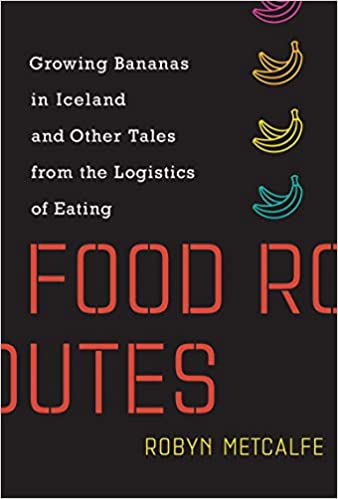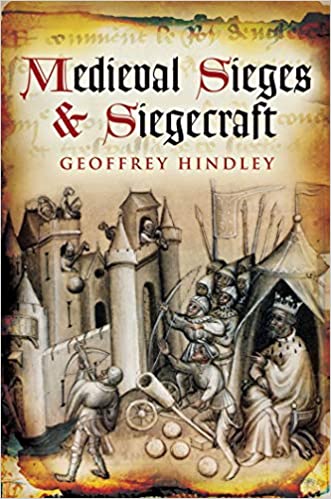|
The Divine Comedy
By Dante Alighieri Published in 1320 923 Pages Thibault’s Score: 4/5 Dante’s Divine Comedy is one of the most celebrated pieces of Christian literature, perhaps second only to the bible. It was written by Dante Alighieri, a Florentine politician in the early 1300s. It is an absolutely massive poem, divided into 99 cantos. The first 33 deal with Dante’s journey through hell, the next with his passage through purgatory, and the final section ends with Dante going to heaven. In many ways, the publication of the Divine Comedy can be seen as one of the moments when Europe passed from the Middle Ages into the Renaissance. I really like the values that Dante promotes. What is fascinating is that the characters in heaven, purgatory, and hell all mirror each other - and none are perfect. Every single character is a sinner in some way. For example, Dante meets two women who cheated on their husbands in hell and in purgatory respectively. What makes the difference is that the woman in purgatory worked hard to repent for her sins. Dante’s Divine Comedy is excellent. It is a must read for just about anyone, although I recommend doing so accompanied by a course or with a heavily annotated version. I only appreciated the book as much as much as I did because I also took a course in parallel.
0 Comments
From Mind to Market: Reinventing the Retail Supply Chain
By Roger D. Blackwell Published in January 1999 272 Pages Thibault’s Score: 1/5 After reading the preface and first two chapters, I decided not to finish this book. It had all of the hallmarks of books that I hate. First, the book was written by a self described guru. It is a second person “cookbook” targeted to business owners. Second, it reeks of institutionalism. It praises academia and large consulting firms. This is a bad sign, but not always fatal. Most importantly, the book was written in 1999. This book might have been relevant 20 years ago, but is hopelessly out of date. There are many fields where you can learn a lot from old books; but industrial supply chains are not one of them. Many of the technologies described in the book’s first two chapters are hopelessly out of date. Retail businesses barely even exist anymore post pandemic. This book is focused on saving an industry that died in the decades shortly after it was written. Most supply chain books that are pre Amazon are now useless. Maybe in a few decades, it will have some value for supply chain historians to understand the 1980s and 1990s. But for people who want to learn about modern supply chains, I wouldn’t even bother picking it up. Food Routes: Growing Bananas in Iceland and Other Tales from the Logistics of Eating
By Robyn Metcalfe Published in March 2019 208 Pages Thibault’s Score: 3/5 I would describe Food Routes as a great recap of the major news headlines from 2010 - 2019 about how food supply chains are changing. First things first: the most disappointing part of this book is that it doesn’t even talk about growing bananas in Iceland! The author briefly mentions that Iceland tried to grow bananas in a single sentence and then never revisits it. You will not get a basic introduction to food supply chains by reading this book. What you will get is a broad overview of the new technologies reshaping the space, and a good explanation as to why food supply chains are vitally important to the survival of human civilization. Metcalfe outlines two futures. One where technology leads to evolutionary growth. Where current systems still exist but do so much more efficiently - augmented by self-driving trucks, digital tracking, the blockchain, etc… The other future is one of revolution, where fundamental paradigms are overturned. People are no longer concerned with the traditional trappings of quality food - instead they turn away from animal based proteins, embrace soilless vertical farming, and eat genetically engineered lab grown food. If anything, this book is chilling. The unforeseen consequences of dietary “monocropping” could be huge - the health implications alone could be devastating. For example, when sugar was introduced into the American diet in the 1950s, most poor people still went hungry. Now, obesity is endemic, especially among the urban poor. CRISPR edited foods, lab grown proteins, and other radical innovations all show promise. The risk comes from government regulators forcing everyone everywhere to adopt the technology. My main criticism about this book is that it is vague. Instead of explaining each individual technology, it jumps around too much. It has incredible width but very little depth. This book feels like it was written by someone with extreme ADHD. Overall, I give this book a lukewarm recommendation for supply chain nerds and professionals who want to catch up on current trends. This book has a short expiration date. It will be irrelevant by 2022 or 2023. Reading this post-pandemic already makes me feel like a lot of the information is out of date. Medieval Maritime Warfare
By Charles D. Stanton Published in September 2015 368 Pages Thibault’s Score: 2/5 Medieval maritime warfare is a long and dreary tome that gives a broad overview of maritime warfare in the middle ages from 500 AD until 1500 AD. I found the book to be very boring. While the subject matter seems interesting, the writing style was very un-engaging. The author admits, in the introduction, that he did not write the book out of passion - and instead wrote it because his editor pointed out to him that nothing had been written on maritime warfare during the period yet. Survey histories are hard to write. Narratives covering a specific narrow period make it easier to collect individual memorable anecdotes that make human stories easier to remember. I’ve found that survey histories tend to be boring because they are too zoomed out, and ignore the individual human struggles. Viking Norway in 800 AD is such a radically different place from Mamluk Egypt in 1200 AD that writing this book well would have been very difficult. I’m not surprised that Charles Stanton failed to bring the topic to life - the task would be difficult to accomplish for even the most brilliant historians and writers of any era. Medieval Maritime Warfare really misses the forest for the trees. Instead of explaining in broad strokes why maritime warfare is important and coming up with interesting anecdotes, it gets lost in the details. I remember being really excited to read about the Hanseatic League. Instead, page after page goes into technical details about the castles on the boats; the ropes and the rigging; the shape of the sails, etc… It was incredibly boring. The chapter about the Hanseatic League could have gone into more detail about the economic and political situation of the area at the time. It also needed good human level anecdotes - a good maritime legend about sailors fighting monsters or a hagiography involving sailing Saints would help make the book much more memorable. This is yet another case of how modern academic writing styles rot people’s minds. Modern academics sacrifice clarity for detail; memorable anecdotes for statistical replicability; and simplicity for verboseness. I do not recommend this book. Medieval Siege and Siegecraft
By Geoffrey Hindley Published in May 2009 240 Pages Thibault’s Score: 4/5 Medieval Siege and Siegecraft is an excellent concise survey history of the capture of cities and castles in the Middle Ages. Cities have always been the centers of economic activity. Their control is a key matter of political survival for most states. Consequently, siege warfare is by far the most important part of medieval warfare. Despite this importance, siege warfare isn’t frequently depicted in modern popular media. Movies and games don’t depict the toes falling off, the starvation, gangrene etc… due to gore. Nor do they depict the mundane day to day transportation tasks that are vital for success in medieval siege warfare. The complicated logistics of medieval siege warfare would lead to the rise of many modern supply chain practices. This book is concise, clearly written, and to the point. There are no unnecessary details or irrelevant historical narratives. I recommend it to anyone who wants to learn more about warfare in the middle ages; but not to a general audience. Medieval Bodies: Life, Death and Art in the Middle Ages
By Jack Hartnell Published in November 2019 352 Pages Thibault’s Score: 4/5 Medieval Bodies is a fantastic dive into the evolution of medicine in the Middle Ages. The book covers the period from roughly 800 AD until 1500 AD. It is organized very cleverly, starting with the head, moving down all the way to the feet. One major problem comes with writing broad survey histories of a large period like the Middle Ages: the incredible diversity of opinion across time and space makes covering the topics very difficult. Hartnell adeptly deals with this problem, constantly reminding the reader that the perspectives of Aachen in Charlemagne’s time would vary greatly from the perspective of a doctor in Mamluk Egypt. The big takeaway is this: medieval medicine worked pretty well. Compared to the medicine of antiquity, there was significant progress. Our medicine is still very embryonic - we do not have a good understanding or cures for conditions like cancer, MS, or blindness. And yet, we take solace in the fact that our medicine is still progressing. People in the Middle Ages had complex mental models that they had come up with to explain why things work the way they do. For example, they believed that humors acted as chemical systems regulating and controlling different functions. When a treatment worked, they came up with an explanation that matched their mental model - for example, if an herb relieved a stomach ache, they would explain it as a calming of the humor. Many of these models would later be proven wrong, despite significant practical evidence that they worked. This, of course, begs the question: how do we know that our own explicative models might be incorrect despite the presence of significant empirical evidence. Another fascinating insight I had was the degree to which medicine did not exist as a distinct practice. Instead, it was part of a broader body of philosophy. The edges between physics, theology, medicine, butchery, and quackery were non-existent. The concept of “scientific” medicine is a blurry concept. In many ways, a healer who practices their art by trial and error broadly embodies the scientific principle: they are testing different treatments, recording the ones that do and don’t work, and attempting to improve their practice based off of this. The only difference is that modern science is more rigorous in terms of how the tests are carried out. This is an excellent, and extremely thought provoking book. I recommend it to anyone interested in the history of science, the middle ages, or medicine. |
Thibault SerletMost of my articles are book reviews, but I also write about many other topics. Archives
December 2023
Categories |






 RSS Feed
RSS Feed